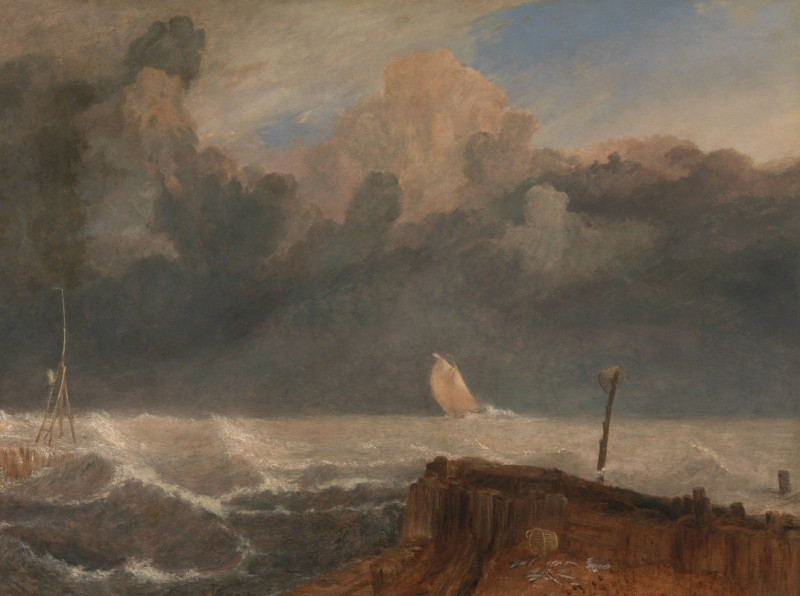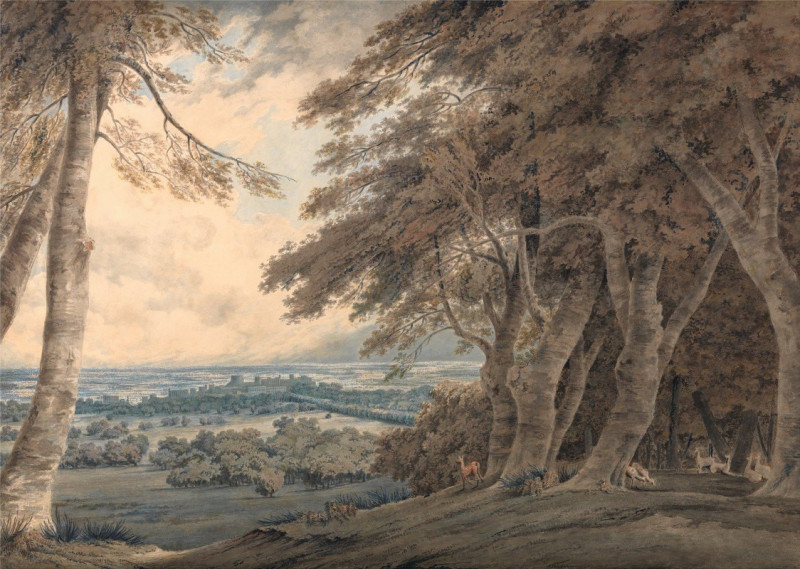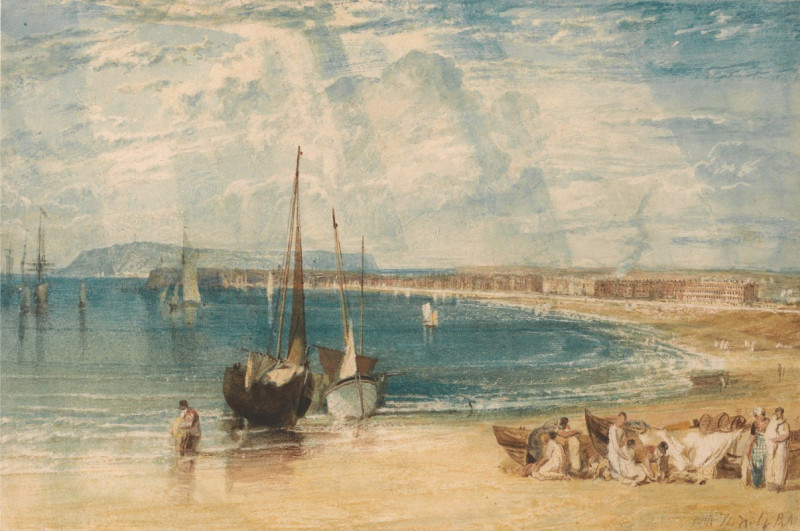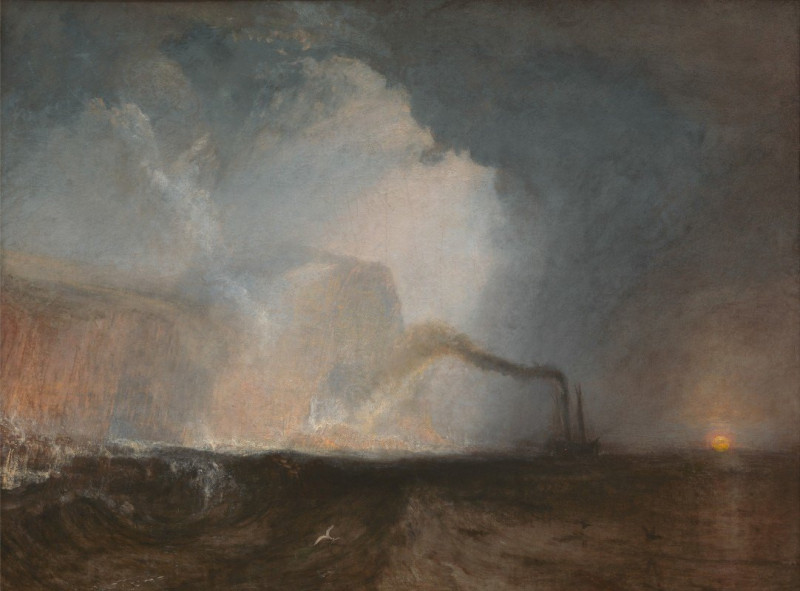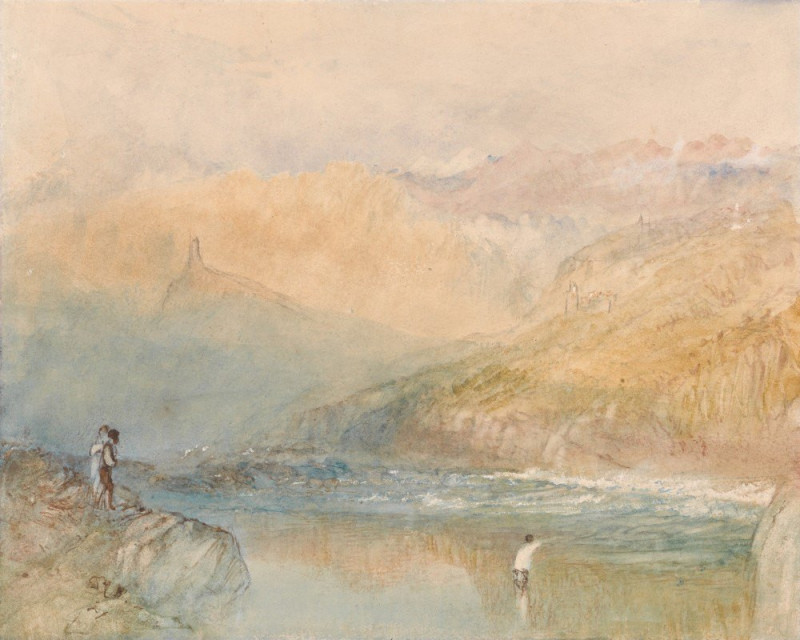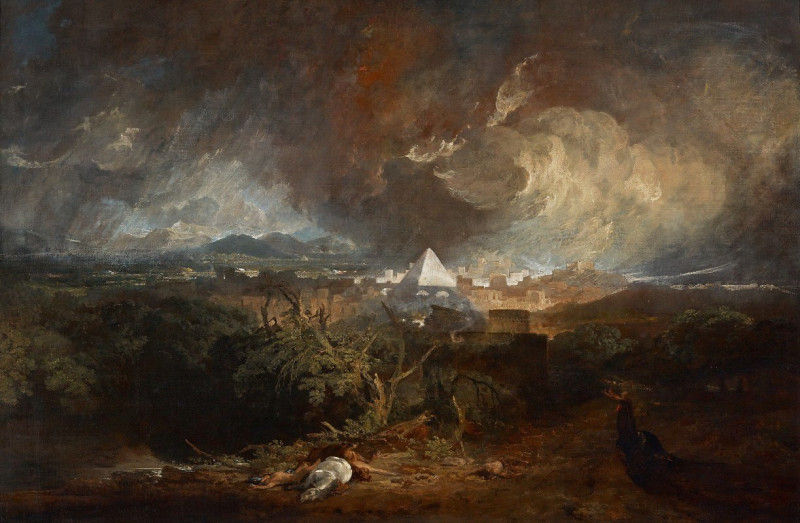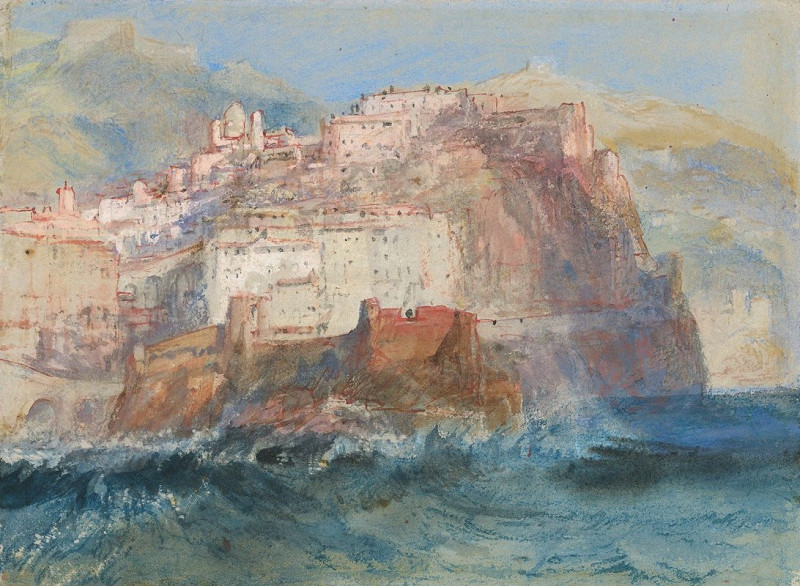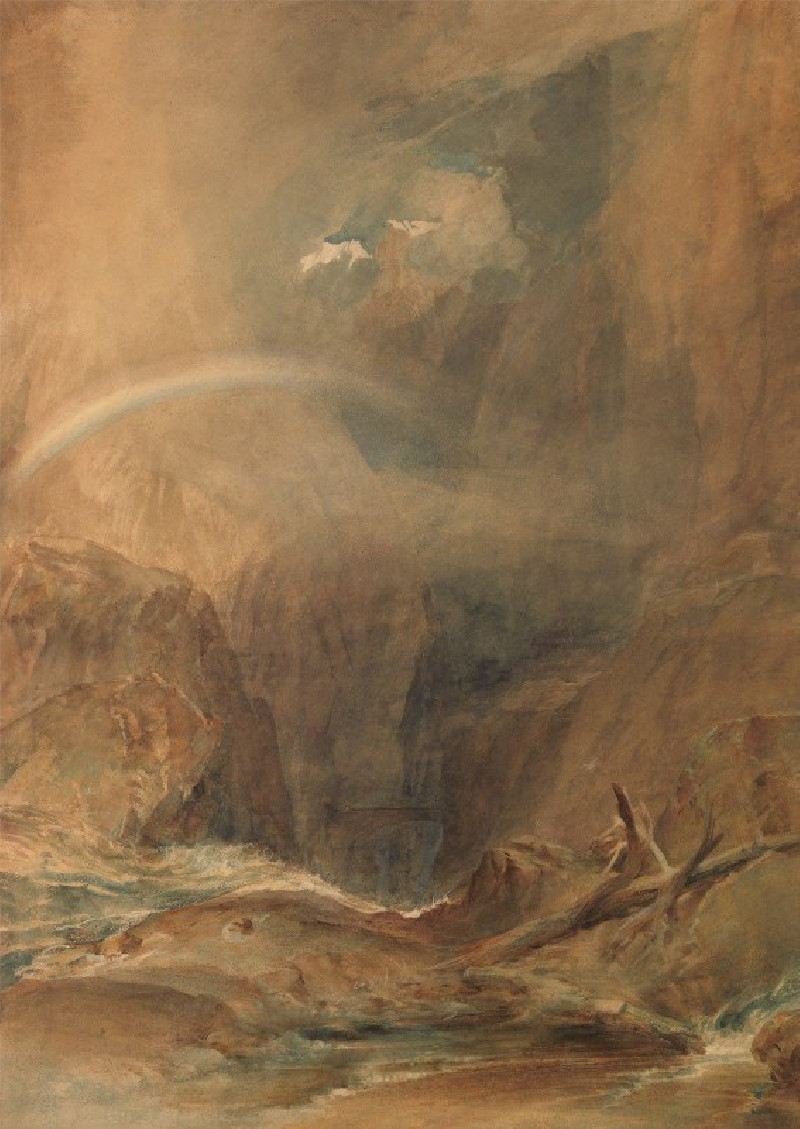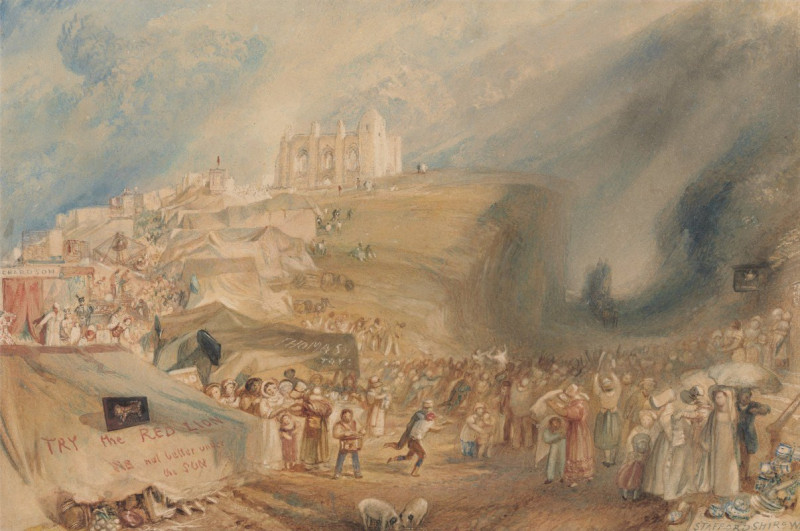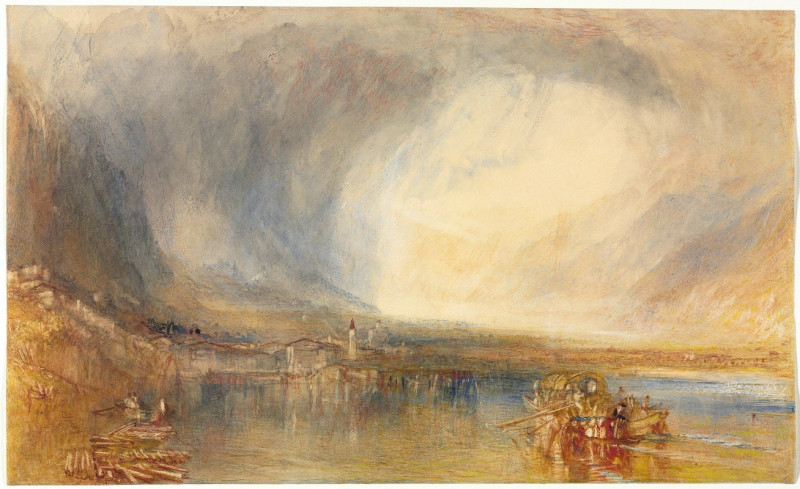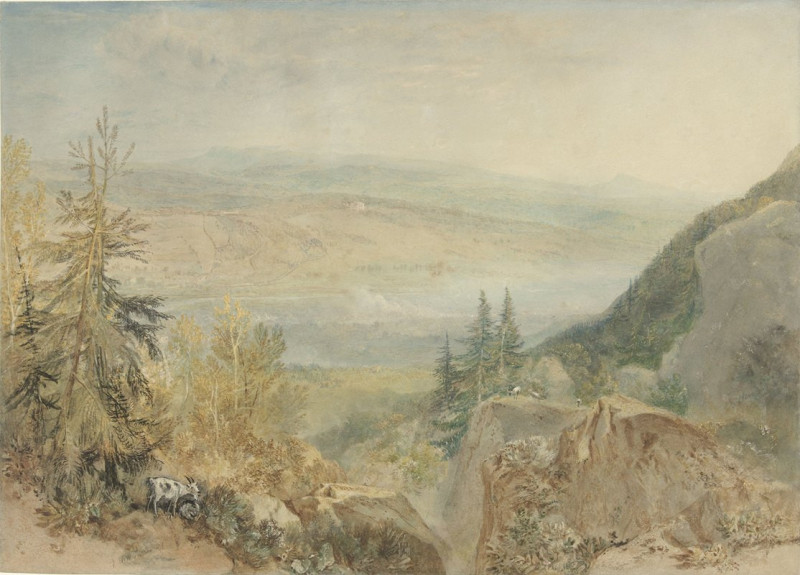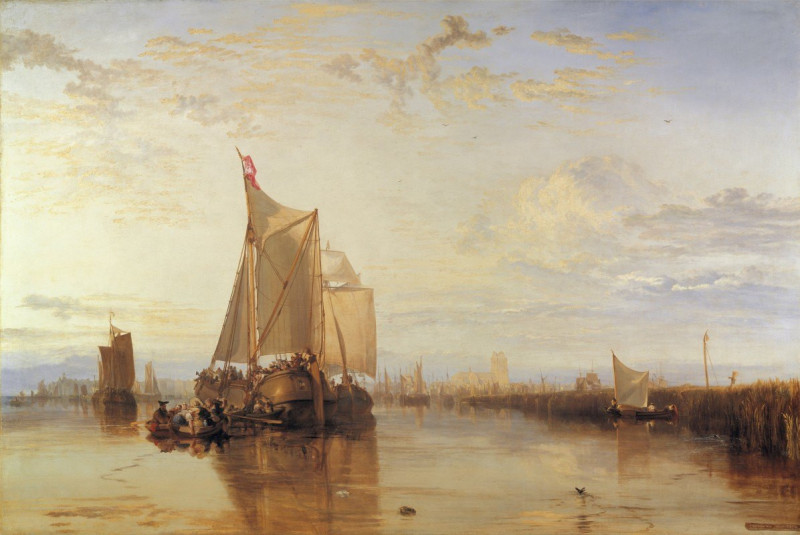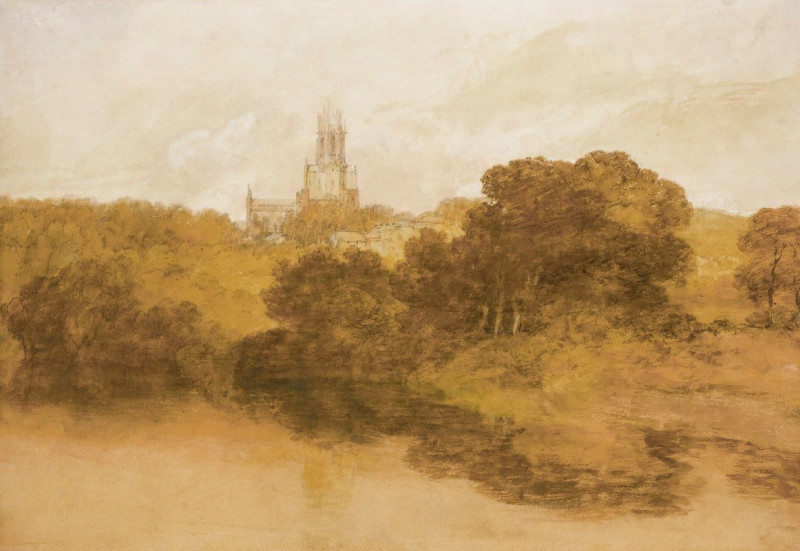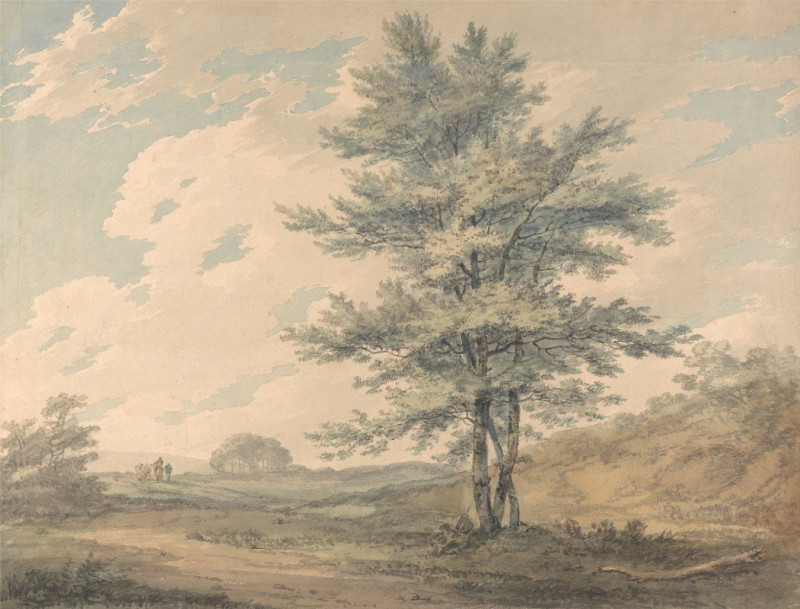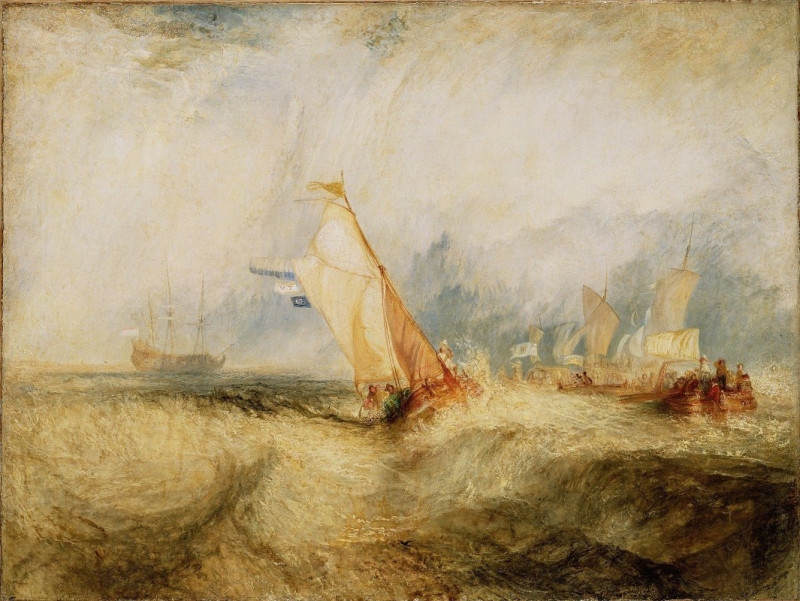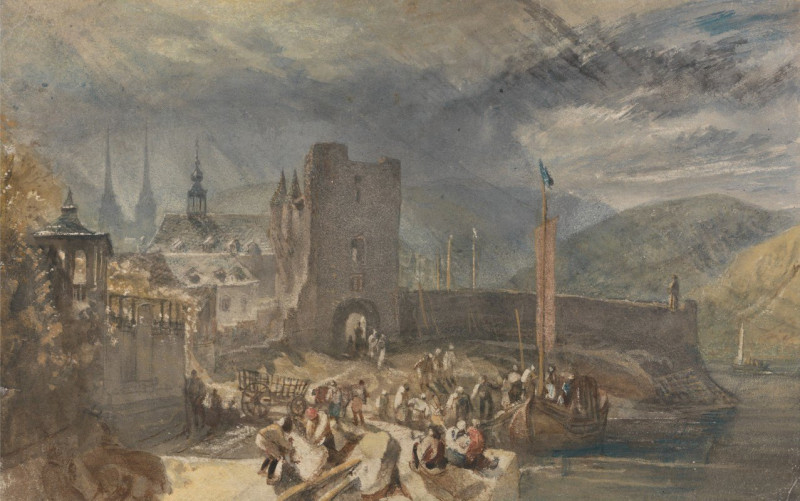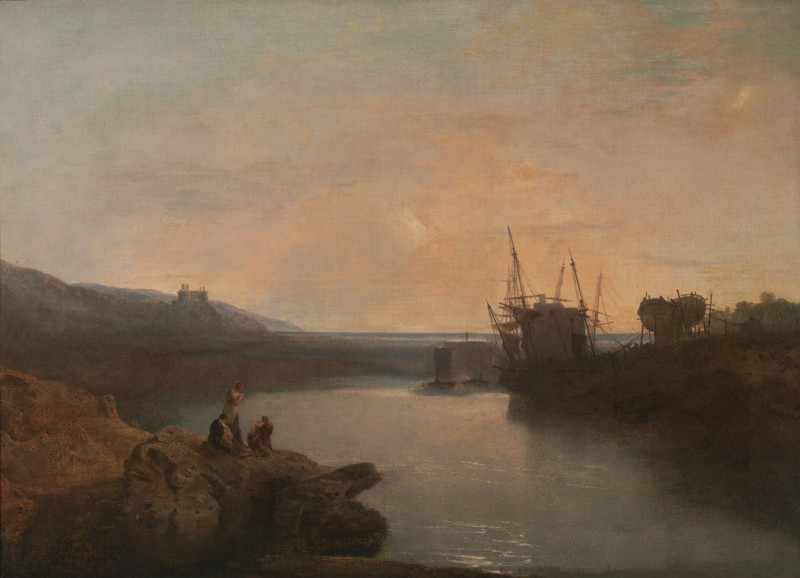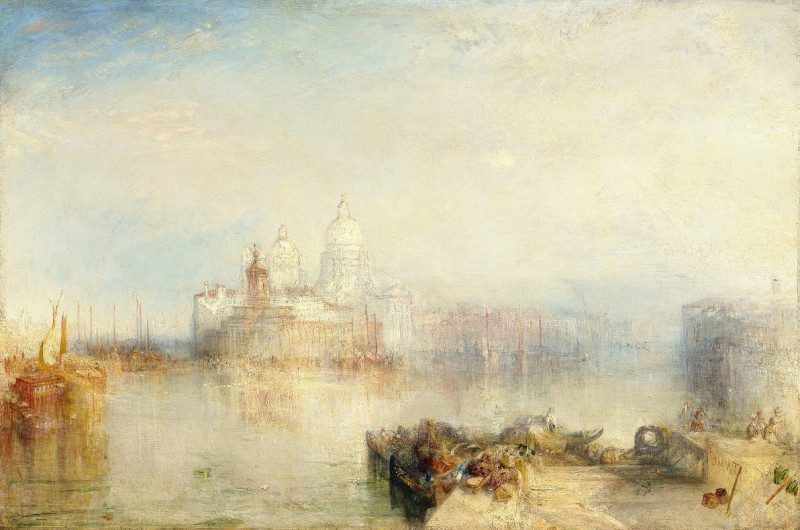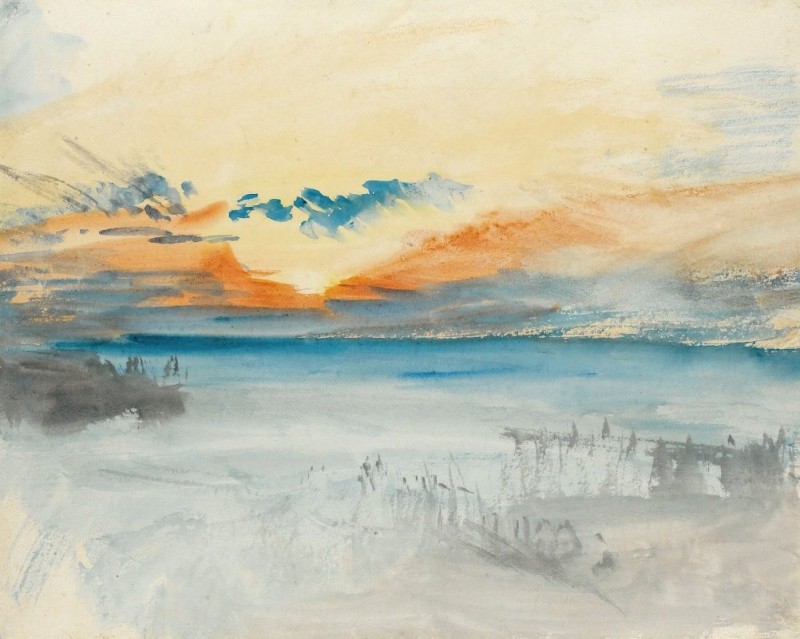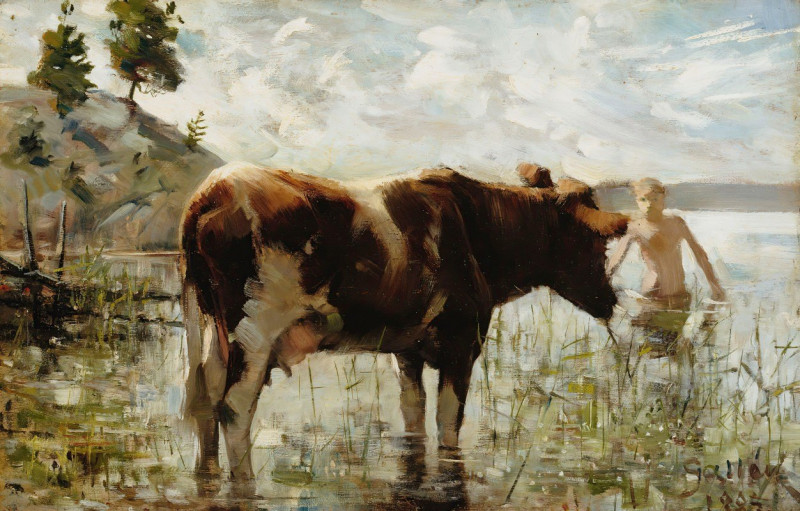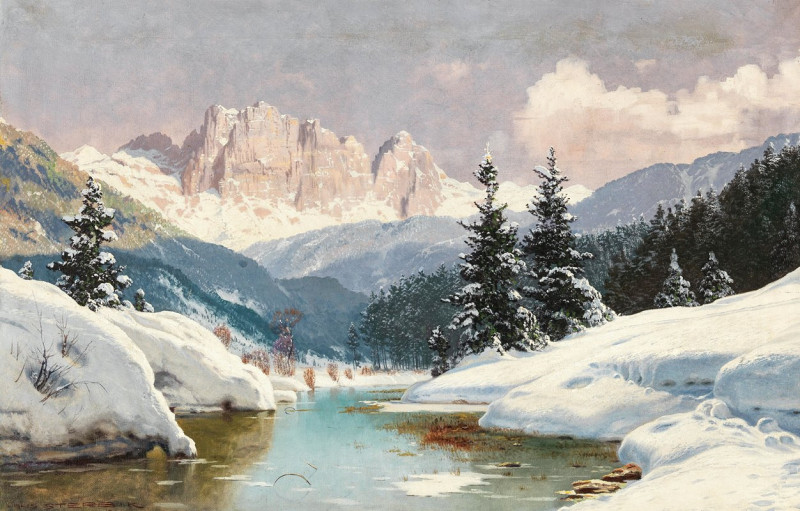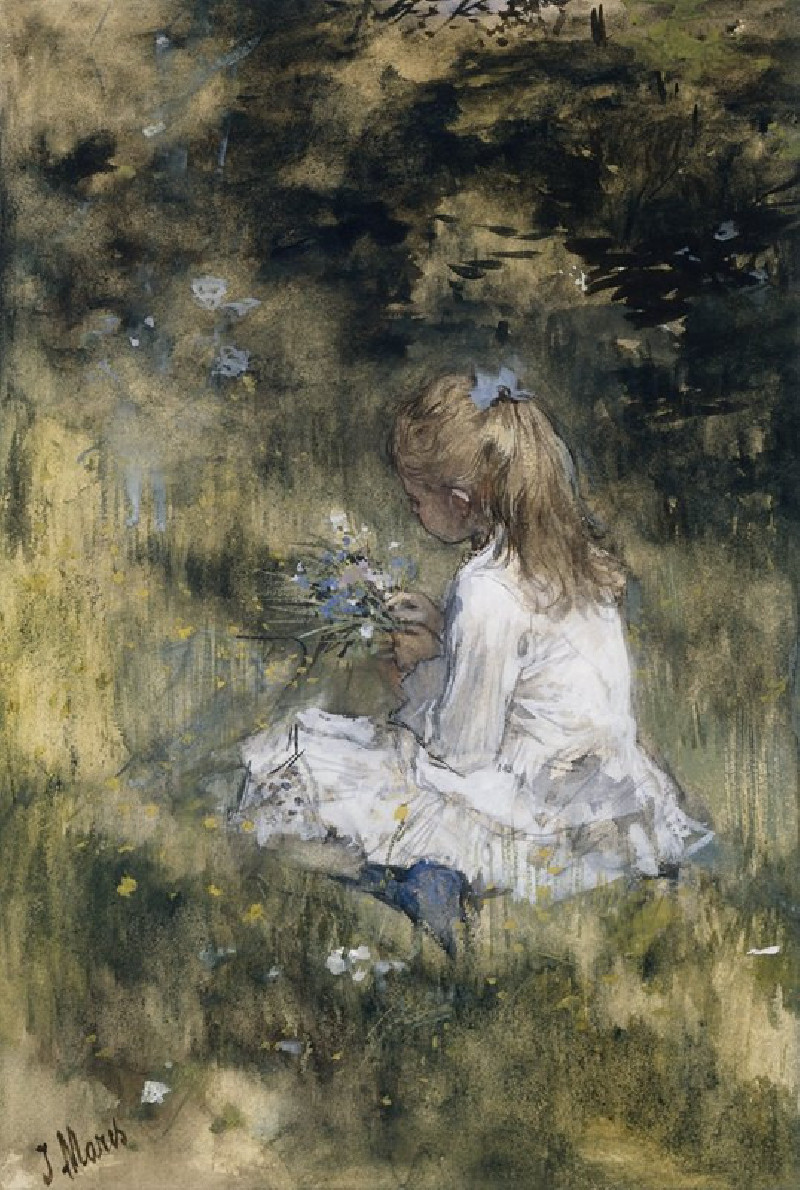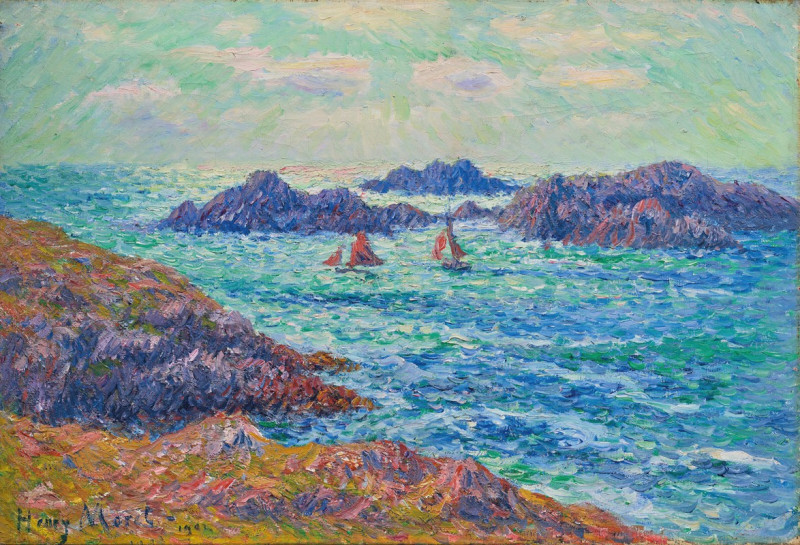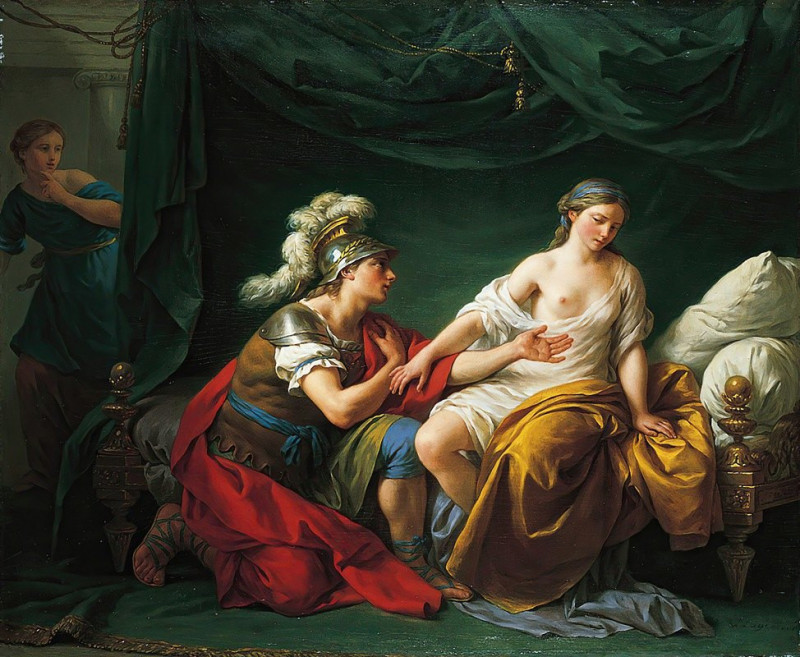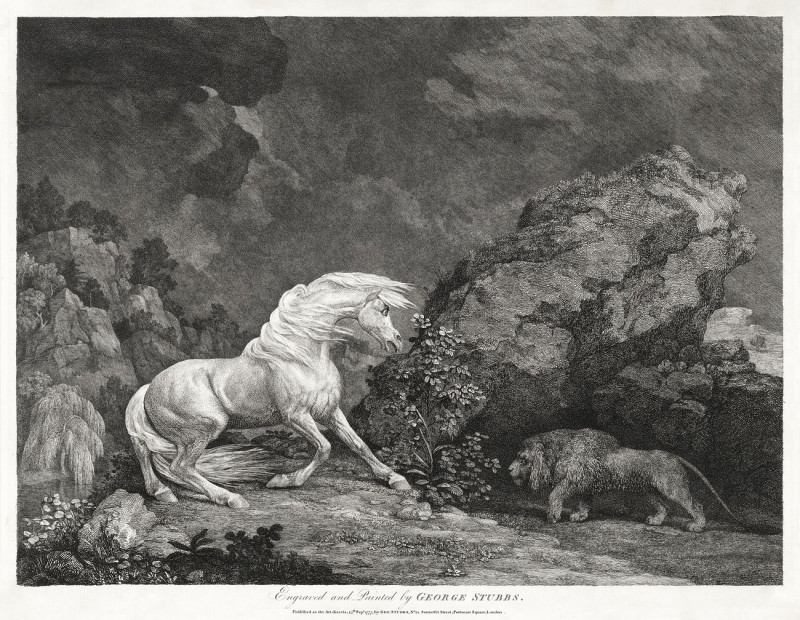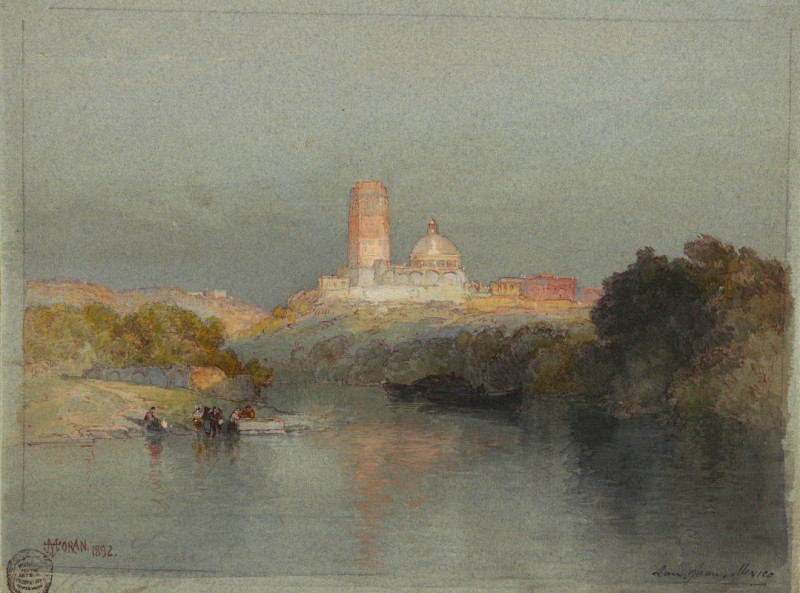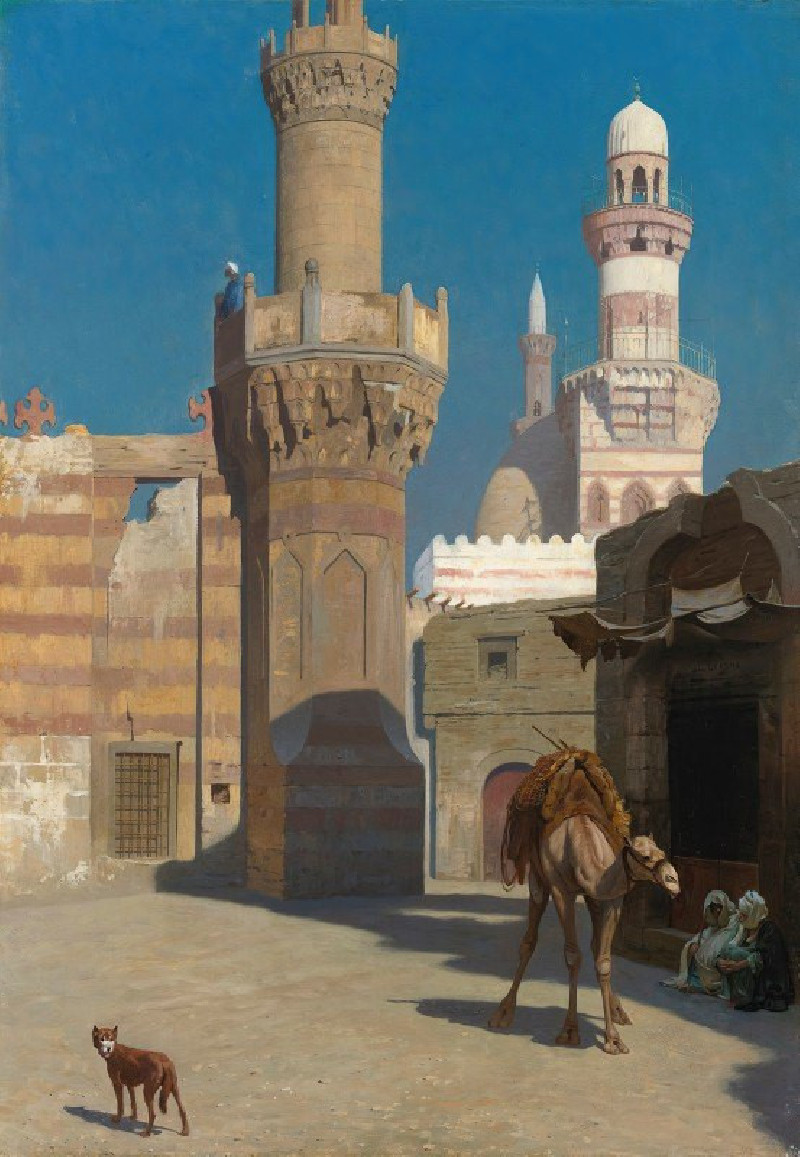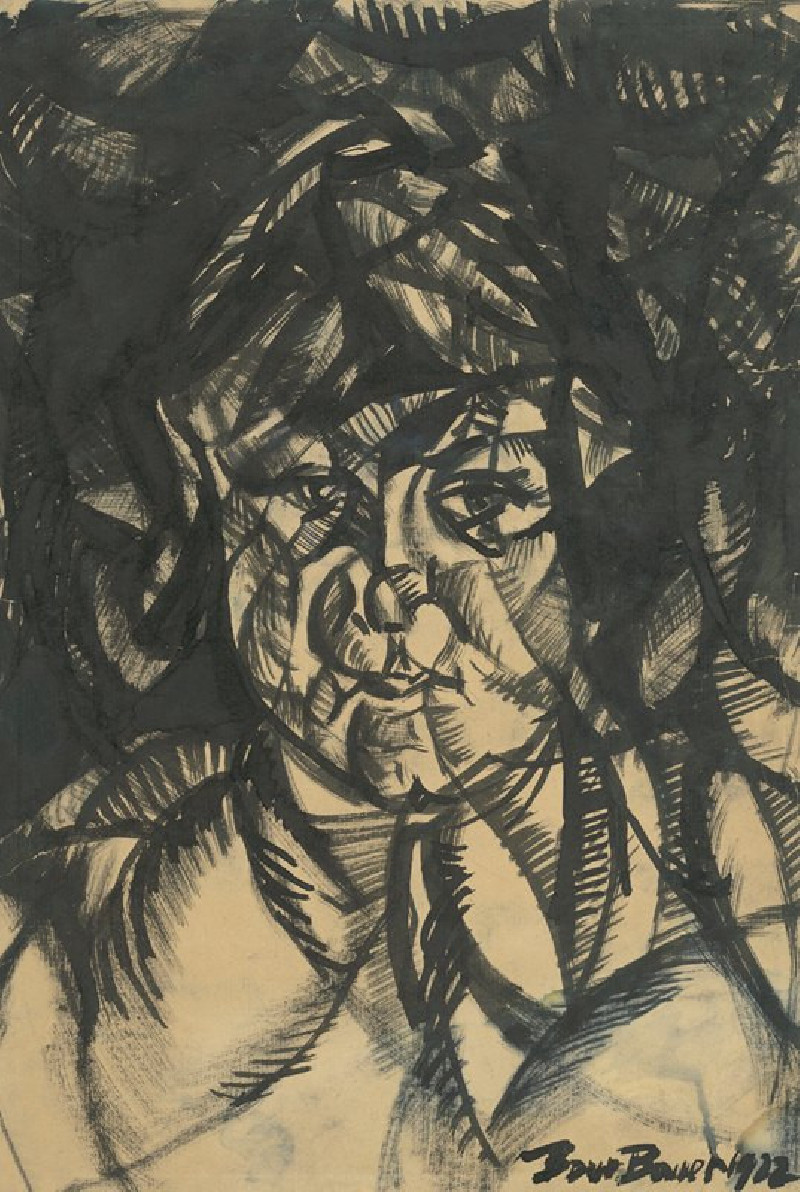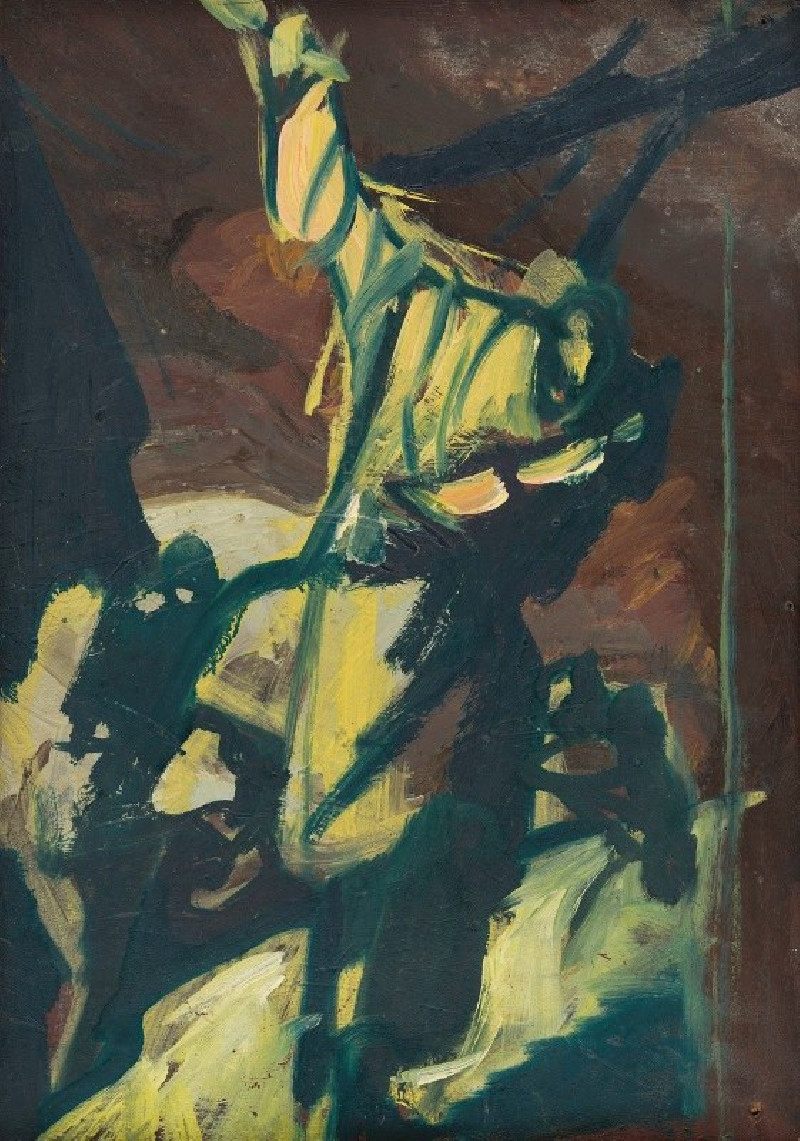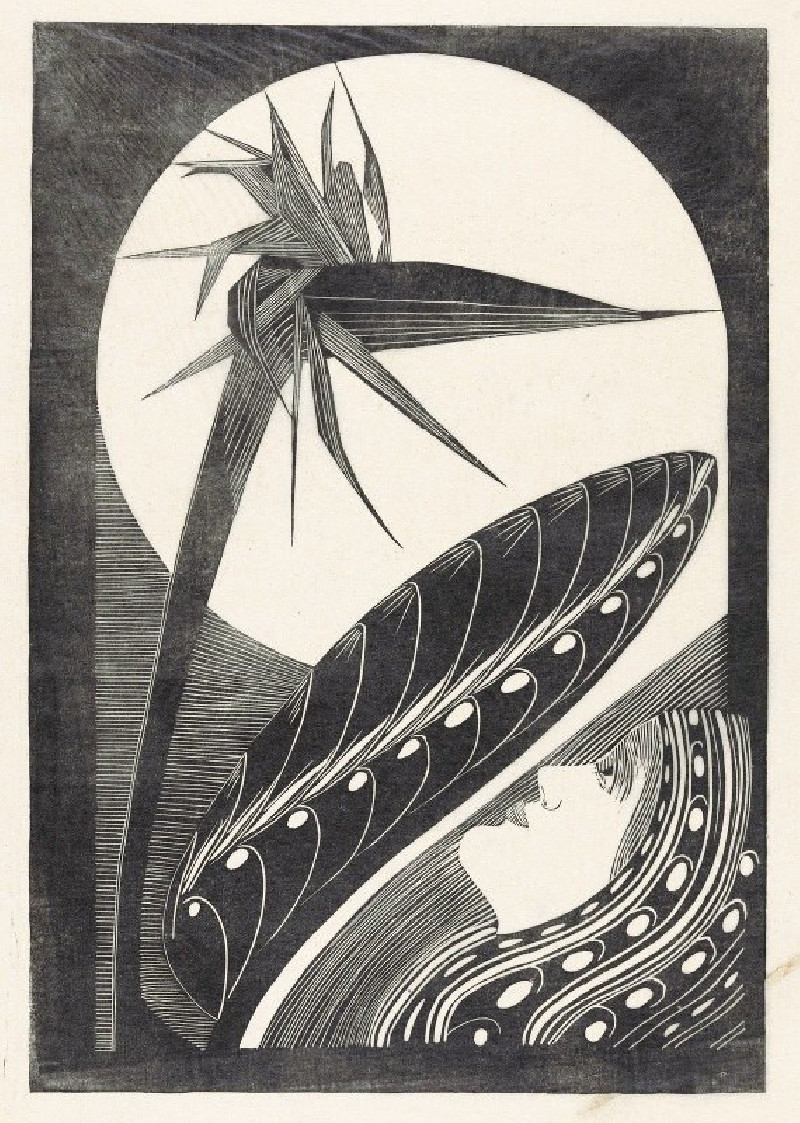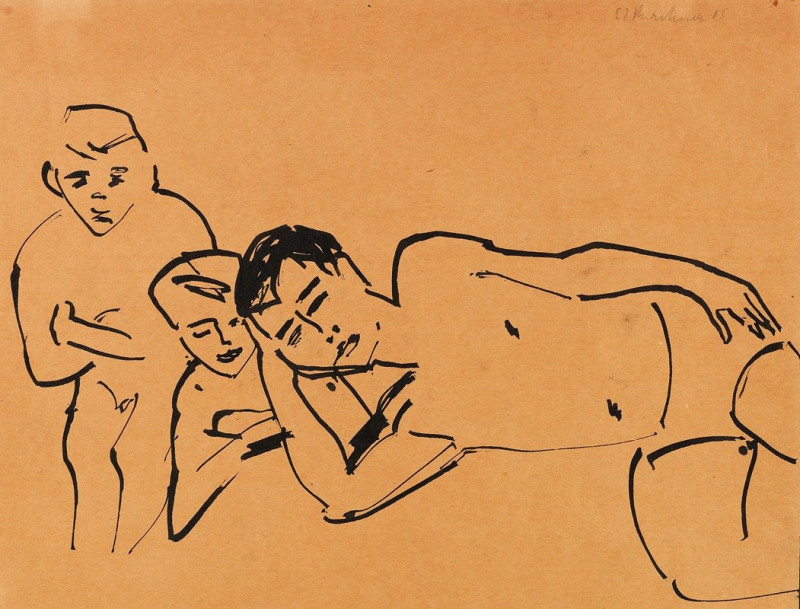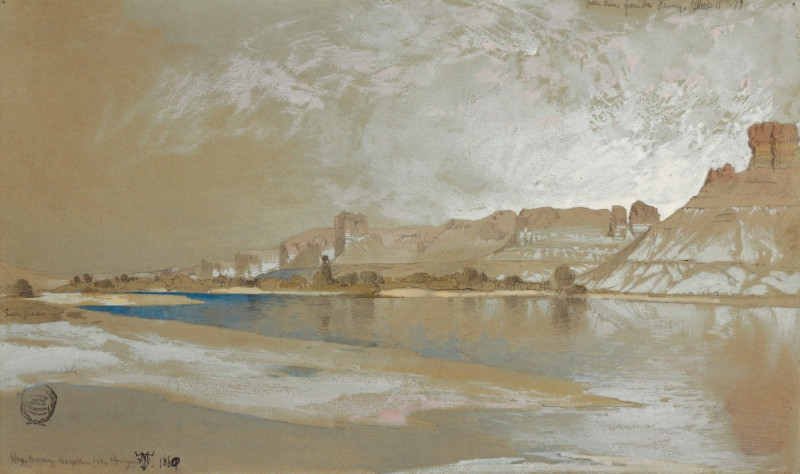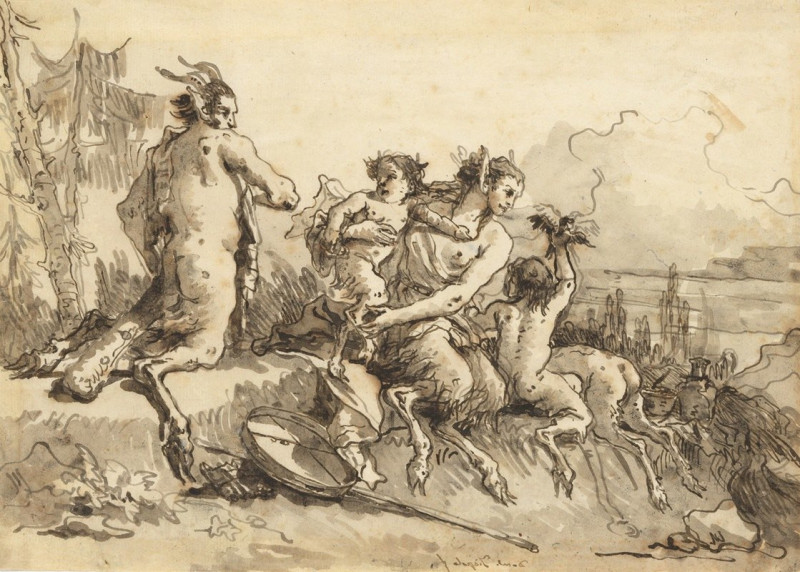Tours: Sunset- Looking Backwards (between 1826 and 1830)
Technique: Giclée quality print
Recommended by our customers
More about this artwork
"Tours: Sunset - Looking Backwards" is an exquisite painting by Joseph Mallord William Turner, created between 1826 and 1830. Joseph Mallord William Turner was a painter of light, known for his magnificent works that capture the beauty of the natural and the manmade world.In this particular artwork, Turner invites us to experience a serene sunset in the historic city of Tours, France. The scene is bathed in a warm, shimmering glow that so typifies Turner's adept manipulation of light and atmosphere. The sun, although barely visible, casts its luminous rays across the canvas, reflecting off the waters and illuminating the figures and structures with a subtle, ethereal light.The composition presents a bustling riverside scene where everyday life unfolds against the backdrop of the historical architecture of Tours. The foreground is animated with a variety of figures—people conversing, resting, or going about their daily chores—and animals, adding a lively human element to the natural spectacle of the sunset. The elongated shadows and the golden hue enveloping the scene evoke a sense of calm and the passing of time.To the right, boats moored along the riverbank and figures engaged in activities suggest the river's role as a lifeline for the city, a traditional avenue for transport and trade. In the distance, the silhouette of the cityscape with its spires hints at the urban expanse beyond the immediate tranquility of the riverside.Turner's mastery in creating atmospheric effects and his focus on the transient qualities of light are what make "Tours: Sunset - Looking Backwards" a captivating visual experience.
Delivery
Returns
Joseph Mallord William Turner RA, known in his time as William Turner, was an English Romantic painter, printmaker and watercolourist. He is known for his expressive colourisations, imaginative landscapes and turbulent, often violent marine paintings. He left behind more than 550 oil paintings, 2,000 watercolours, and 30,000 works on paper. He was championed by the leading English art critic John Ruskin from 1840, and is today regarded as having elevated landscape painting to an eminence rivalling history painting.


